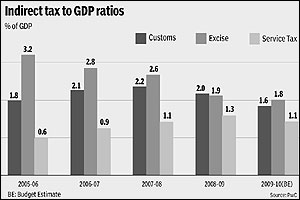In what could be termed as the fastest turnaround for the hospitality sector, key metros in the country are once again facing a shortage of hotel rooms, compared with a 50% drop in occupancy at its peak last year.
Most five-star hotels in Delhi, Mumbai and Bangalore are now sold-out in terms of bookings, with room rates more or less hovering around last year?s pre-Mumbai terror attack levels, according to estimates of travel agents.
A report by hospitality consultancy firm HVS International says 2008-09 saw declines in occupancy and revenue per available room (RevPAR) in most cities in India, following the global contraction. ?The industry experienced an overall decline in occupancy of 12.4%, following the downward trend that started last year?, said Manav Thadani, managing director of the company.
The rebound in occupancy had to be seen in the backdrop of India recording one of the weakest occupancy levels, of 57.9%, in the Asia-Pacific region in September. According STR Global, revenue per available room (RevPAR) fell 33.5% in September to Rs 3447.85.
 However, now there is a consensus among the travel agents FE spoke to that with the start of the peak season in October, hotel rooms in the main hubs of these metros are difficult to come by and the shortage is likely to persist for the next couple of months.
However, now there is a consensus among the travel agents FE spoke to that with the start of the peak season in October, hotel rooms in the main hubs of these metros are difficult to come by and the shortage is likely to persist for the next couple of months.
?Corporate and leisure travel has considerably bounced back after a prolonged lean period?, said Pradeep Lulla, president of the Travel Agents Federation of India. He explained that even if room rates have not seen an increase from last year?s peak season levels, the decline is only 10-15% (year-on-year for the room rates). ?Also, rates are up 35-40% from what they were earlier this year, which is significant?, Lulla added.
For instance, rates in five-star hotels like Taj, including the flagship property at Gateway of India and Trident in Mumbai, are now in the Rs 10,000-12,000 range. Before the terror attacks in the city, the rates were hovering around 17,000, which later got reduced to the Rs 6,000 to 7,000 range earlier this year.
?Even though the shortage of the rooms this time around is not constant for the entire peak season (which is from October to March) like the last few years, it is healthy for the industry?, said Rajinder Rai, president of Travel Agents Association of India. Rai claims rates charged by Delhi hotels are higher by 10-15% compared to last year. However, magic figures like Rs 20,000 per night that hotels had reached two years ago, will take some more time to happen.
Compared to Mumbai, Delhi has enjoyed a higher margin, as there are more events lined up in the city, like the ongoing India International Trade Fair, and a greater percentage of leisure travellers who visit the Agra-Delhi-Jaipur circuit. Subhash Goyal, chairman of STIC Travel Group, said he is not surprised with the un-availability of rooms. ?One can gauge the extent of the recovery from the fact that domestic air traffic was up by 27% year-on-year in October. If there are no major incidents in the future, the situation will remain the same,? he said. Industry experts said that even though travel advisories issued by the US and the UK over the last month have led to a few cancellations, these have not significantly affected traffic.

